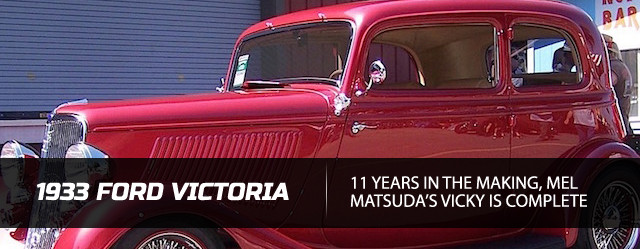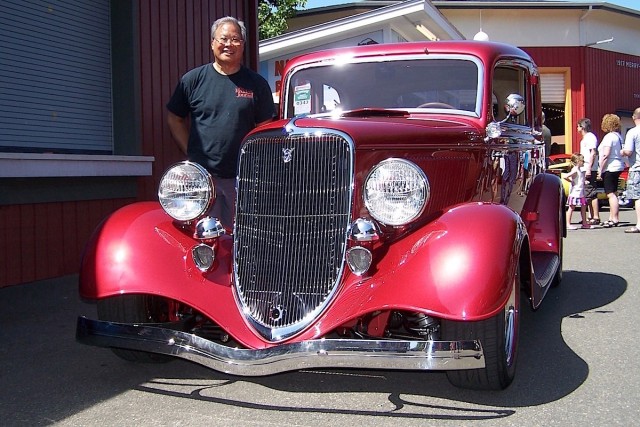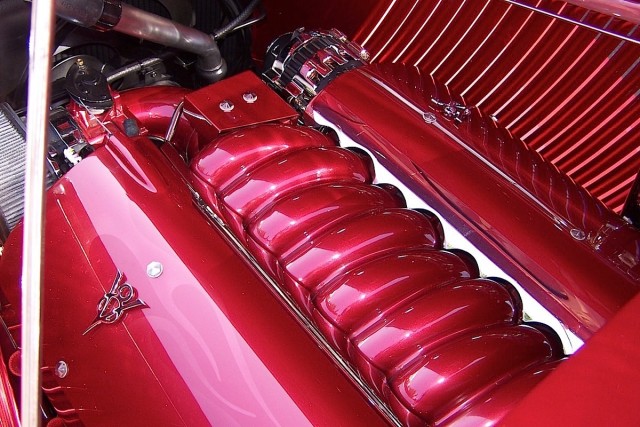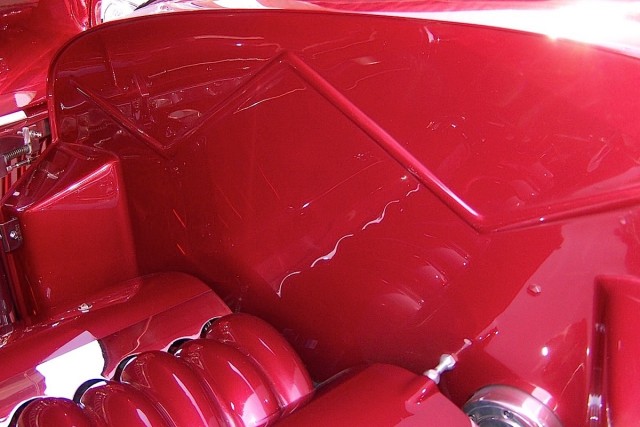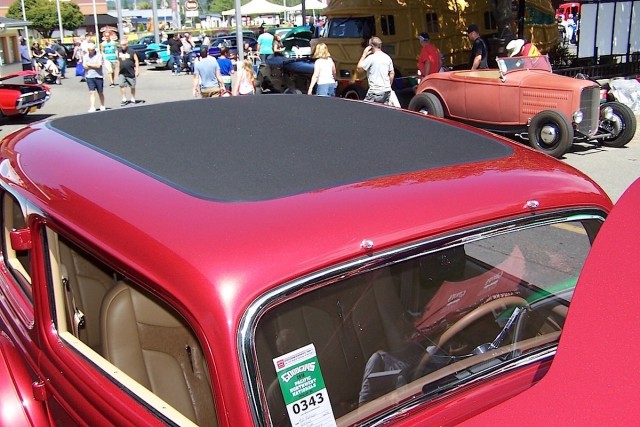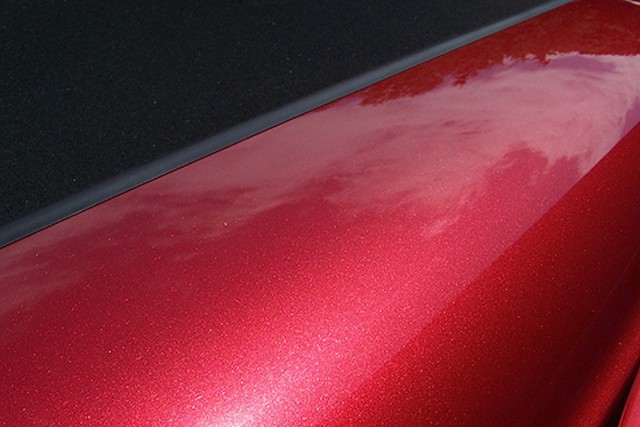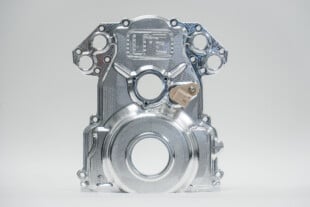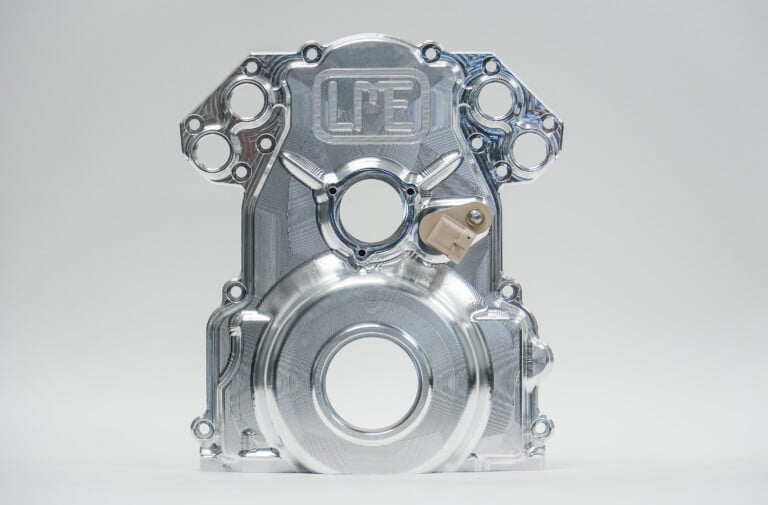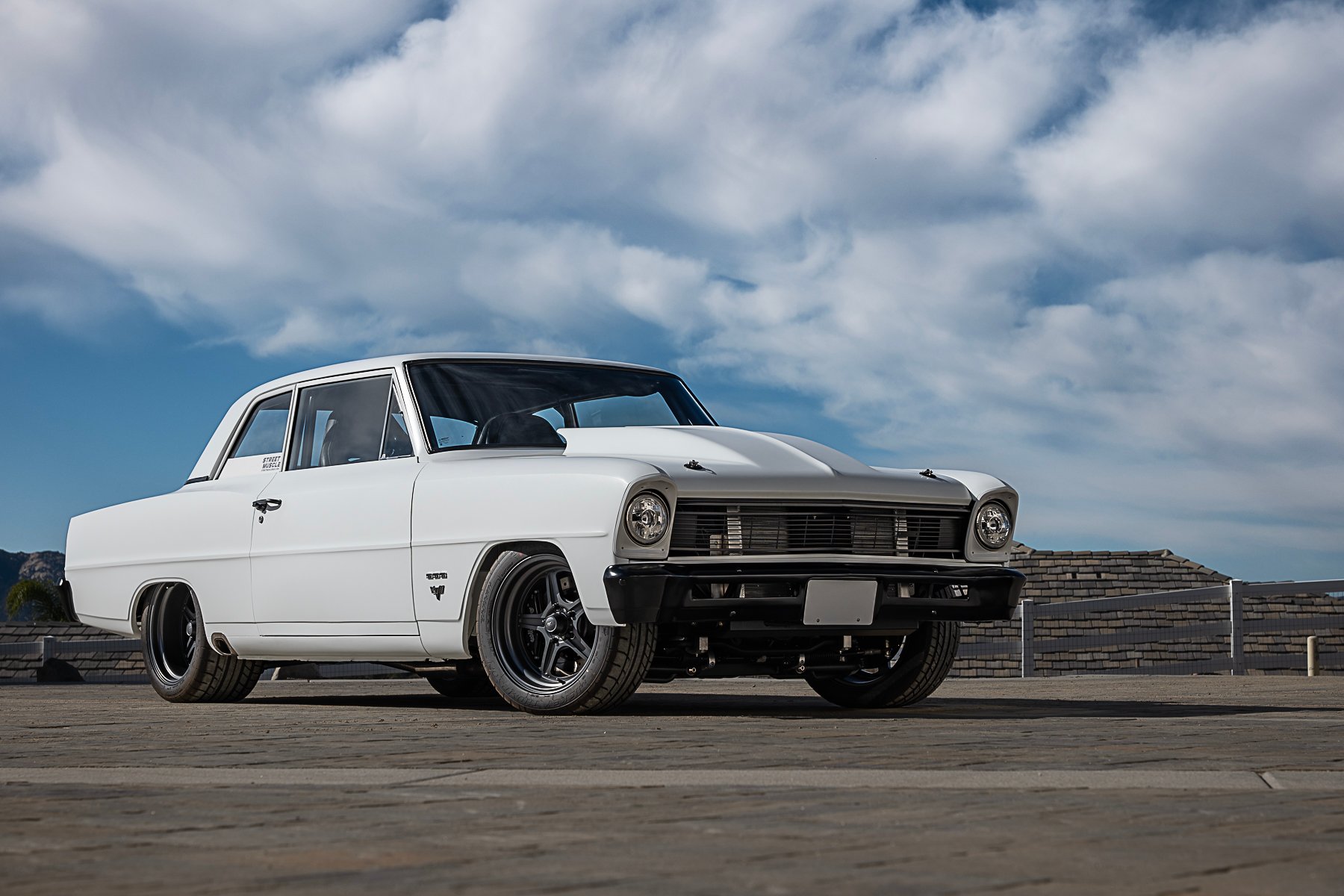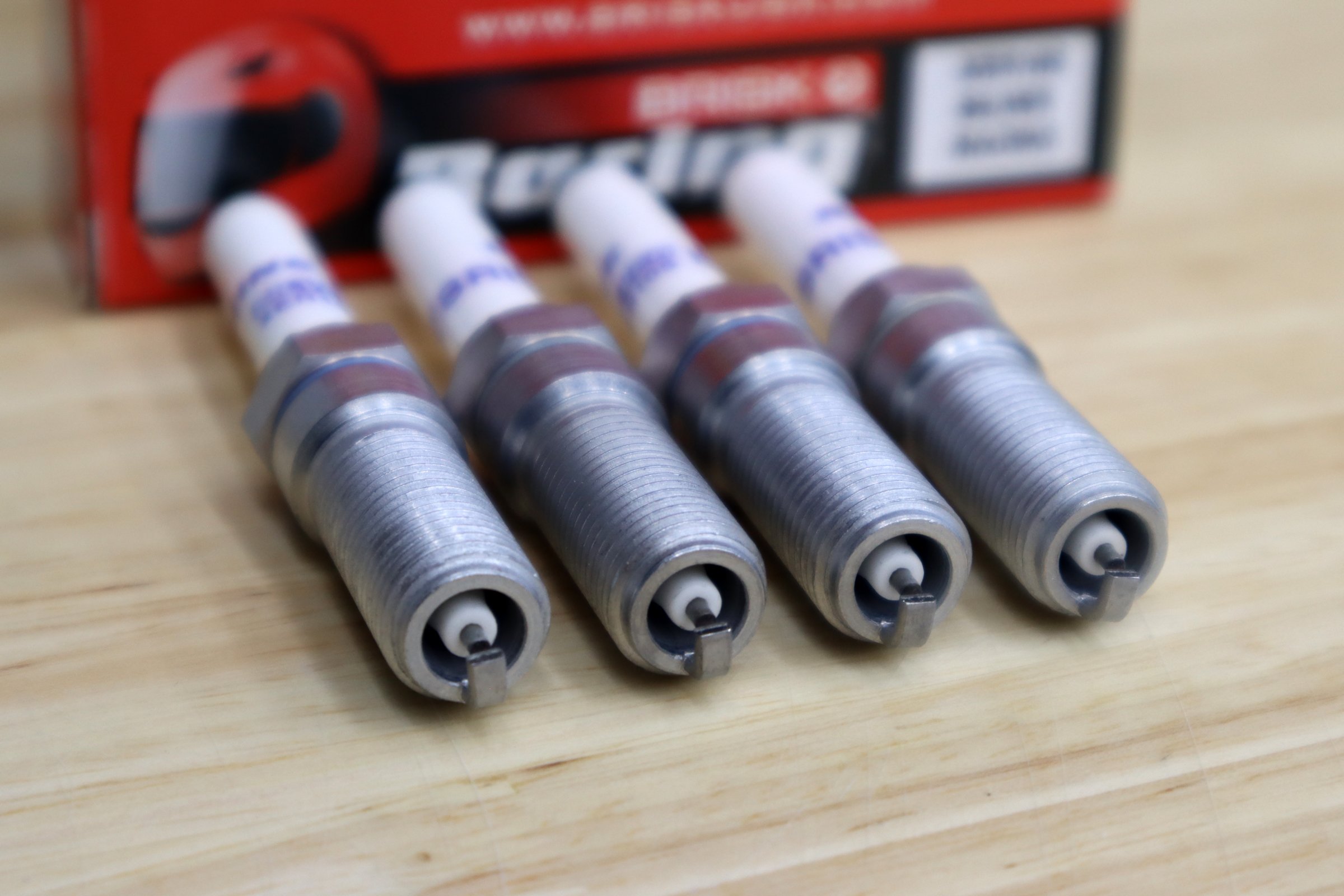You would have to go back more than a decade, eleven years to be exact, when Portland, Oregon’s Mel Matsuda found the hot rod of his dreams. No, it wasn’t a completed car by any means, just a steel body on a chassis, in need of a lot of work to get it to the point where most observers would even begin to recognize what it was.
Yet Matsuda, a devotee of 1933 and 1934 Fords, and more specifically, Victorias, envisioned what the upscale two-door coupe of its era could be and determined then and there what it would take to make it happen.
“Rough” more than likely would have been putting it mildly, and no doubt Mel, a periodontist by profession, assessed the various ways he might be able to find time outside his practice to work on the car in the evenings and on weekends.
However, realizing his own limitations was important, particularly when an endeavor like this required rebuilding the car from the ground up. Rather than starting to do it himself and becoming frustrated when it didn’t turn out like he planned, Matsuda found J&L Street Rod Repairs’ John Olson. It was Olson that could see in the Vicky’s remnants a 72-year old – at the time the build was started – diamond in the rough, and with Mel, they envisioned what it could be with the body reworked and all new, updated underpinnings.
Beginning with a custom 112-inch frame from Schroeder Speed & Custom, a stainless steel independent front and parallel leaf rear suspension was added, along with a front stainless steel sway bar, custom motor mounts and a tubular crossmember. Front springs, shocks, spindles, and rack & pinion steering all came from Heidt’s, actuated by a custom-length Flaming River steering column.
In back, Olson added a 20 gallon Rock Valley stainless gas tank, Bilstein shocks, a 9″ Ford rear end with 3.73 gears, Dutchman axles, and a driveshaft from Portland’s Driveshaft Services, which connects to the ’02 4L60E transmission. Mounting polished Wilwood disc brakes all around, custom-painted 15″ X 8″ front and 17″ X 10″ Dayton wire wheels were shod with Falken 205-55ZR15s and 225-65ZR 17s respectively to complete the chassis.
Taking a 425 HP, 5.7 liter engine from a 2002 Corvette, the block was shot with aluminum paint, before affixing stainless ghost flamed and polished coil covers, braided fuel lines, and bright silver ceramic coated Sanderson block hugger headers. A 2 1/2-inch diameter exhaust system, fabricated by J&L Street Rod Repair, uses a pair of Edelbrock 304 mufflers to keep dBs in check, just as the Walker radiator retains the LS engine’s cool.
It was then that Olson began thoroughly massaging the steel ’33 Vicky body, extending the cowl to cover the modern engine and transmission. A three-piece hood, which retained the stock louvers, was fashioned to match. After a lengthy debate over the inclusion of the signature spare tire well (with or without a tire), it was decided not to leave it without a spare at all. Instead, they formed sheetmetal to fit as though Ford had designed the body without it. Looking at the completed body, the fit and finish is exceptional and you’d never think this wasn’t how it was designed and manufactured at Ford.
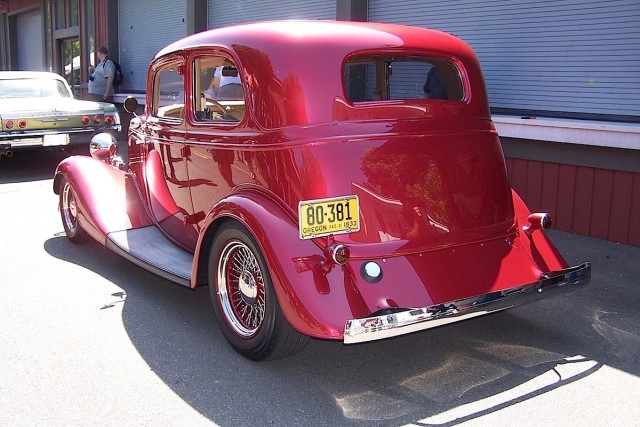
The great debate is always to fabricate a spare tire well or not. Matsuda chose to make it look just the way Ford designed it.
Axalta‘s Spies Hecker Ford G2 Redfire Metallic paint was applied to all exterior surfaces, but not before John had devised a steel insert to go in place of the cloth roof, with Dynamat to keep it quiet and covered with Haartz cloth, the same material used in OEM applications on high-line vehicles. Now noise free and leakproof, the insert could at any time be removed and a new folding top installed to emulate the original.
Moving inside, one seemingly small detail seemed to take an inordinate amount of time. J&L followed the curvature of the dash, and blended it into the doors. Rather than painting this part of the doors body color, it was matched to the tan Ultra Leather which Damascus’ Lynn Romfo used throughout the interior for a more elegant appearance. Ostrich leather inserts were added to the custom seats, also crafted by Romfo. Dynamat sound deadener was used all through the body to minimize road noise.
A Secret Audio head unit is contained in a flip down panel under the dash, and the Alpine and Hertz speakers are either hidden or housed behind hand fabricated speaker grills that contain the Victoria logo. While a Vintage Air unit modulates the temperature, the original cowl vent also remained operational by adding a small electric motor that allows it to open and shut even with the additional wiring and electronics contained behind the dash. A banjo steering wheel from the Wheel Shoppe completed the interior.
One reason for having a custom chassis under a pre-war car is that it allows you to mount the bumpers closer to the body for a cleaner look. John set the stainless steel stock front bumper much closer for a sleeker appearance. Using a stainless ’37 Ford truck bumper at the rear which followed the new body lines better than the original, this was another reason why the backside of Matsuda’s Vicky looks like it came from the factory this way, only better.
11 years is a lengthy period no matter how you mark time, and March, 2016 at the 2016 Portland Roadster Show was the ’33 Victoria’s debut. Since then, Mel promised John he would continue to show the car throughout this area of the country for one year before taking it out on the road and enjoying what has become the fruits of both of their labor.
While there is a prominent place in the Matsuda garage for the Vicky, we wouldn’t be surprised if another space opens up, and another noteworthy build begins. Good things happen when the owner and builder share the same vision, along with the desire and determination to see it through.



